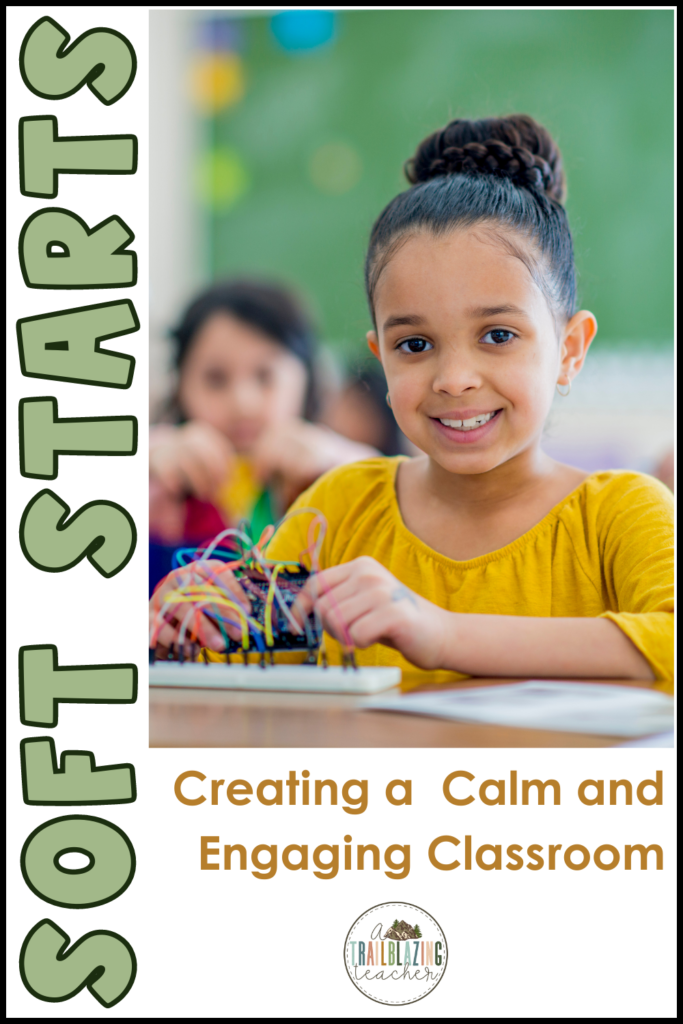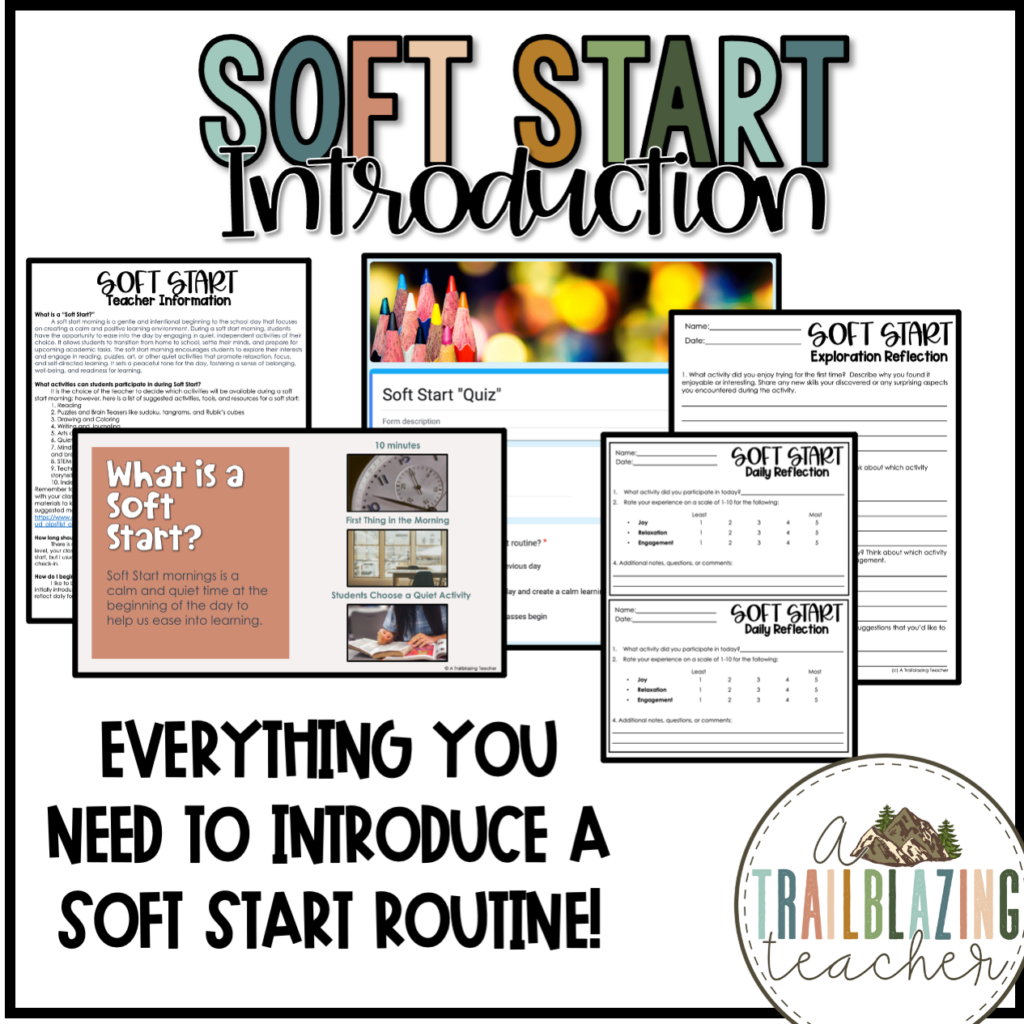As educators, we strive to create a positive and engaging classroom environment where students can thrive academically and emotionally. One strategy that has had a profound impact on my classroom is implementing Soft Starts. Today, I want to share with you the wonders of Soft Starts, the benefits they bring to students, and a few tips and tricks to help you get started introducing Soft Starts in your classroom.

What is a Soft Start?
A Soft Start is a simple yet powerful practice that allows students to ease into the school day in a calm and focused manner. Instead of rushing right into academic tasks, Soft Starts provide a gentle transition by offering activities that promote a positive and harmonious atmosphere. These activities can range from silent reading, journaling, mindfulness exercises, or even engaging discussions among students.
Benefits of Soft Starts:
- Creating a Welcoming Environment: Soft Starts set the tone for the day, creating a warm and inviting atmosphere where students feel safe and supported. It helps foster a sense of belonging and builds positive relationships among classmates.
- Promoting Self-Regulation: By engaging in activities during Soft Starts, students learn to self-regulate their emotions and develop valuable skills such as self-awareness and self-reflection. This sets the stage for a productive and focused learning experience throughout the day.
- Building Community and Collaboration: Soft Starts provide an opportunity for students to connect with one another, fostering a sense of community and collaboration. Students can share their thoughts, interests, and even work together on projects during this valuable time.
Tips & Tricks
My students and I have loved our Soft Start mornings. Not only did it allow students to slowly and peacefully transition into the classroom environment, but it also allowed me to check in and connect with individual students and complete necessary morning tasks like attendance.
Here are a couple of tips to help you get started with Soft Starts:
- Plan Ahead: Design a variety of Soft Start activities that align with your students’ interests and the learning goals of your curriculum. This ensures a balance between engagement and educational value.
- Model and Communicate Expectations: Clearly communicate your expectations for behavior and engagement during Soft Starts. Model how to participate and encourage students to respect each other’s choices and space.
- Practice Following Expectations!: Just like an classroom routine, give students a chance to practice following the routines and expectations!

Soft Starts have the power to transform your classroom into a calm and engaging space where students eagerly enter each day with excitement. By incorporating Soft Starts, you create a nurturing environment that supports both academic and emotional growth.
So, take a leap of faith and embark on this transformative journey. Start small, experiment with different activities, and adapt them to suit the unique needs of your students. Witness the magic of Soft Starts as you foster a positive learning environment and ignite a love for learning in the hearts of your students.
Happy teaching!
Heather | A Trailblazing Teacher

![Google Keep Headers: organization for OT, PT, SLP These Google Keep headers are the perfect thing to transform your [never ending] TO-DO list into perfectly organized categories. Best part its designed for school-based / pedi OTs (& other related service providers). The colors coordinate with the colors that are already in Google Keep. Aesthetic & functional = an OT win. Google Keep is a great way to keep your notes on all your devices (keep in mind you DO need a google account in order](https://i.pinimg.com/236x/0d/d7/49/0dd74972ac163c3fab14f15cdd154b84.jpg)







